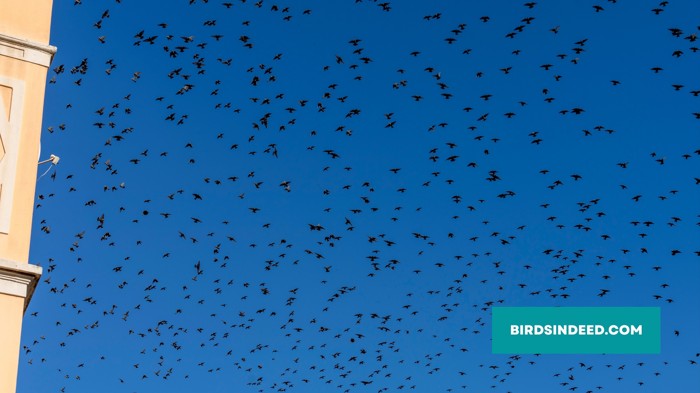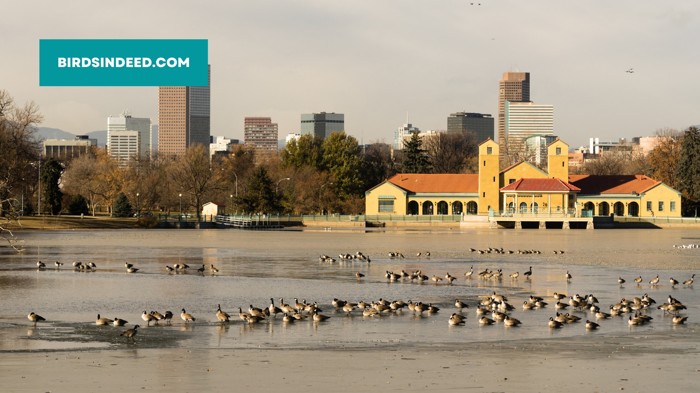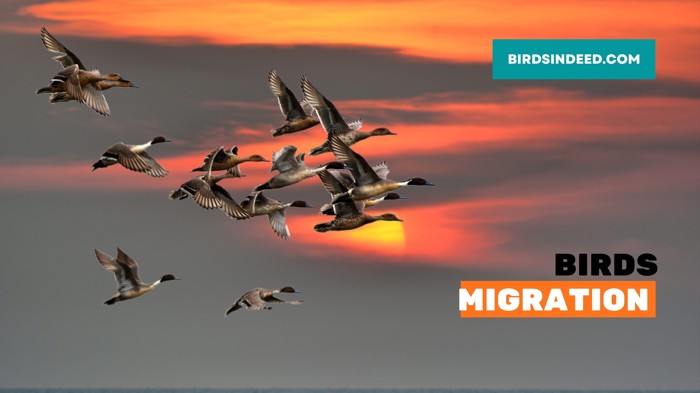Have you ever wondered how birds know when and where to migrate? It’s a captivating phenomenon that continues to amaze scientists and bird enthusiasts alike. Each year, millions of birds embark on incredible journeys, traveling thousands of miles to reach their breeding or wintering grounds. But what guides them on these epic voyages?
In this article, we’ll explore the fascinating world of bird migration. Discover how birds know when and where to migrate, and the incredible instincts that guide them on their journeys. Join us as we unravel the mysteries behind their remarkable abilities and navigate through the wonders of avian migration.
Contents
Why Do Birds Migrate?
Birds migrate for various reasons, adding to the wonder of their journeys. The main drivers behind bird migration are the search for abundant food and suitable nesting locations. As seasons change, birds move from areas with limited resources to regions where resources are plentiful.

In the Northern Hemisphere, many birds nest in the north during spring and summer when insect populations soar, plants begin to bud, and nesting opportunities are abundant. As winter approaches and the availability of food decreases, these birds migrate southward to find more favorable conditions and escape the cold. It’s important to note that some species, like hummingbirds, can endure freezing temperatures as long as they have enough food.
Migration is a complex behavior that has evolved over thousands of years. Genetic factors, along with responses to weather, geography, day length, and food availability, contribute to birds’ migration patterns. The desire to raise offspring successfully is another significant factor driving migration. By moving to areas with ample resources, birds increase their breeding success and ensure the survival of their species.
More than half of the 650+ North American breeding bird species engage in migration, highlighting its significance in the bird kingdom. Birds utilize diverse migration strategies, from shorter journeys to breathtaking long-distance flights covering thousands of miles. In the upcoming sections, we will uncover the different types of migration and discover the origins of this fascinating behavior.

Types Of Migration
Bird migration can be categorized into various types based on the distances traveled by different species. Understanding these different migration patterns adds to our appreciation of the remarkable diversity and adaptability of birds. Let’s explore the main types of bird migration:
Permanent Residents
Some birds do not migrate at all and are known as permanent residents. These birds can find sufficient food supplies throughout the year in their breeding or nonbreeding habitats. They have adapted to specific environments and do not need to undertake long journeys.
Short-Distance Migrants
Short-distance migrants make relatively small movements, usually within a local or regional range. These migrations may involve descending from higher to lower elevations or moving between different habitats within a relatively small area. Examples include altitudinal migrations of certain species on mountainsides.
Medium-Distance Migrants
Medium-distance migrants cover distances spanning a few hundred miles. These birds undertake moderate journeys between breeding and nonbreeding areas, often crossing geographical barriers such as bodies of water or deserts. Many species fall into this category, including some songbirds and waterfowl.
Long-Distance Migrants
Long-distance migration is perhaps the most awe-inspiring and widely recognized form of bird migration. These remarkable journeys involve traveling thousands of miles from breeding grounds to wintering grounds and back. Birds that undertake long-distance migrations often navigate across continents, crossing diverse landscapes and encountering various challenges along the way. Examples include the Arctic tern, which migrates from the Arctic to the Antarctic and back each year, covering astonishing distances.
It’s important to note that the pattern of migration can vary within each category, and some species may exhibit flexible migration strategies depending on environmental conditions. The ability of birds to navigate vast distances and adapt to changing habitats during their migrations is a testament to their incredible instincts and physiological adaptations.
How Do Birds Know When To Migrate?
The timing of bird migration is a captivating phenomenon that has intrigued scientists and bird enthusiasts for centuries. How do birds know when it’s time to embark on their arduous journeys? While the precise mechanisms are not fully understood, several factors play a role in guiding birds during their migrations:
- Day Length: Changes in day length serve as a crucial cue for birds to initiate their migrations. As the days shorten or lengthen, birds sense these variations and respond accordingly. Day length provides valuable information about the changing seasons and helps birds anticipate shifts in food availability and environmental conditions.
- Environmental Changes: Birds are sensitive to environmental cues that signal the availability of resources. For example, the diminishing food supply as winter approaches can trigger birds to start their southward migrations. They move from areas of decreasing resources to regions with higher food abundance, ensuring their survival and reproductive success.
- Genetic Predisposition: Migration behavior is partially influenced by the genetic makeup of birds. Certain species possess inherent migratory instincts passed down through generations. Genetic factors can influence the timing, duration, and direction of migration, allowing birds to follow established patterns encoded in their DNA.
- Weather Patterns: Birds are attuned to weather changes and can respond to favorable or unfavorable conditions. They rely on wind patterns, air currents, and atmospheric conditions to aid their flights. For instance, favorable tailwinds can facilitate faster and less energetically demanding migrations, while adverse weather conditions may cause birds to delay their journeys or seek shelter.
- Social and Environmental Cues: Birds also gather information from their surroundings and interact with conspecifics to determine the optimal time for migration. They may observe the behavior of other individuals or respond to signals indicating the presence of food or safety in specific locations. Social cues and interactions within bird communities can influence the timing and coordination of migrations.

The precise combination and interplay of these factors contribute to the remarkable ability of birds to time their migrations accurately. It’s a complex blend of innate instincts, environmental cues, and adaptive responses that enable birds to embark on their extraordinary journeys across vast distances.
Read: Do Sparrows Migrate?
How Do Birds Know Where To Migrate?
The navigation abilities of migratory birds are nothing short of extraordinary. How do these small creatures embark on long journeys spanning thousands of miles and navigate with such precision to reach their desired destinations? While the mechanisms are still being unraveled, several factors contribute to their remarkable navigational skills:
- Celestial Navigation: Birds can utilize celestial cues, such as the position of the sun and stars, to orient themselves during migration. By sensing the patterns of sunlight and starlight, they can determine their direction and maintain a steady course. This celestial navigation is particularly useful during clear skies and clear visibility.
- Magnetic Sensitivity: Birds possess a remarkable sensitivity to the Earth’s magnetic field, allowing them to navigate based on magnetic cues. They can perceive variations in the magnetic field and use it as a compass, providing a sense of direction. The exact mechanisms by which birds detect and interpret magnetic fields are still under investigation, but this innate ability guides them on their migratory paths.
- Landmarks and Geographic Features: Birds are adept at recognizing and utilizing prominent landmarks and geographic features during their migrations. They can use coastlines, mountain ranges, rivers, and other distinctive landmarks as visual cues to navigate their way. By following familiar routes and utilizing these landmarks as reference points, birds can stay on track even when flying over vast and featureless landscapes.
- Olfactory and Auditory Cues: While not as extensively studied as other navigation mechanisms, there is evidence to suggest that birds may use olfactory (smell) and auditory (sound) cues to aid their migration. Some species may rely on scent to detect specific odors associated with their destination, while others may use auditory cues, such as the sounds of waves or rivers, to guide them towards their intended locations.
- Inherited Knowledge: Migration routes can be passed down through generations of birds, leading to a collective knowledge of established pathways. Young birds learn from older, experienced individuals and acquire information about traditional routes and stopover sites. This inherited knowledge, combined with individual experiences and adaptations, contributes to the successful navigation of migratory birds.

It is important to note that migration routes can vary within species and even among individuals, influenced by factors such as weather conditions, food availability, and habitat changes. Birds are adaptable and can adjust their routes based on these dynamic factors, showcasing their flexibility in navigating the ever-changing environment.
By combining these various navigation strategies, birds can find their way across vast distances, following well-established routes or adapting to new circumstances. Their innate abilities and environmental cues guide them to their wintering grounds or breeding sites with remarkable accuracy, allowing them to complete their epic migrations year after year.
Also Read: DO CARDINALS MIGRATE? EXPLORING THE MYSTERIES OF CARDINAL MIGRATION
Hazards and Challenges
Migration is a remarkable feat undertaken by birds, but it is not without its perils. Birds encounter a range of hazards during their long-distance travels, including physical exhaustion, scarcity of food sources, inclement weather, and increased vulnerability to predators. The arduous nature of migration tests their physical and mental capabilities, pushing them to their limits.
One significant challenge for migratory birds is human-made structures in their flight paths. Tall buildings and communication towers can disorient birds with lights, causing collisions and harm. To address this, initiatives like the Fatal Light Awareness Program and BirdCast’s Lights Out project raise awareness and mitigate risks.

Conservation is crucial for protecting migratory birds. Scientists use banding, satellite tracking, and geolocators to study migration patterns and identify important stopover sites and wintering grounds. By understanding these locations, conservation efforts can focus on preserving habitats that provide essential resources for migrating birds.
International collaboration is crucial for the conservation of migratory birds. Through international agreements and partnerships, efforts can be coordinated to safeguard essential habitats along migration routes. Protecting vital ecosystems such as wetlands, forests, and coastal areas ensures the availability of food, water, and resting sites for migratory birds during their challenging journeys.
Conservation initiatives also extend to raising awareness among individuals and communities. By promoting bird-friendly practices, such as reducing light pollution, creating safe spaces for birds to rest and refuel, and supporting habitat restoration projects, we can contribute to the well-being and conservation of migratory bird populations.
Frequently Asked Questions
Are Birds Born Knowing to Migrate?
No, birds are not born knowing how to migrate. However, they have incredible instincts that guide them. Many young migratory birds have an innate map that helps them understand the direction and distance they need to travel during migration. This is evident when we see young birds making their first migration without their parents. Their instincts kick in, allowing them to navigate and find their way to their destination. It's fascinating to witness their natural abilities in action as they embark on their migratory journey.
Do Birds Know Where They're Going When They Fly?
Yes, birds have an impressive sense of direction and are aware of where they're going when they fly. They rely on various cues and navigational strategies to determine their route. Many birds use celestial cues, such as the position of the sun and stars, to navigate during the day and night. They also have an ability to detect Earth's magnetic field, which helps them orient themselves. Additionally, birds use visual landmarks, familiar landscapes, and even their memory of previous migratory routes to navigate accurately. These remarkable abilities allow them to have a sense of their destination and find their way during long-distance flights.
That’s All Folks!
And that’s a wrap! Bird migration is a truly remarkable and awe-inspiring spectacle. By unraveling the secrets of how birds know when and where to migrate, we gain a deeper appreciation for the wonders of nature. So, the next time you witness birds taking flight, take a moment to be captivated by their incredible journeys and the extraordinary wisdom they possess. It’s a beautiful reminder of the marvels that exist all around us in the natural world.
Hyeat is the founder of Birds Indeed, a blog dedicated to all things avian. With a passion for birds and a deep understanding of their behavior, Hyeat shares their knowledge and experiences with readers. Join Hyeat on their journey to learn more about the diverse and beautiful world of birds.







